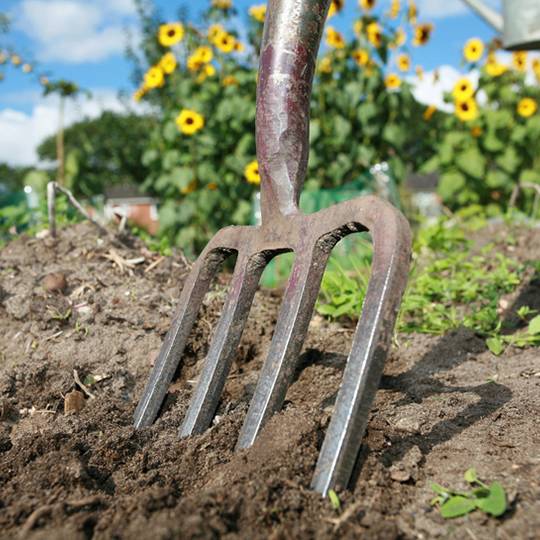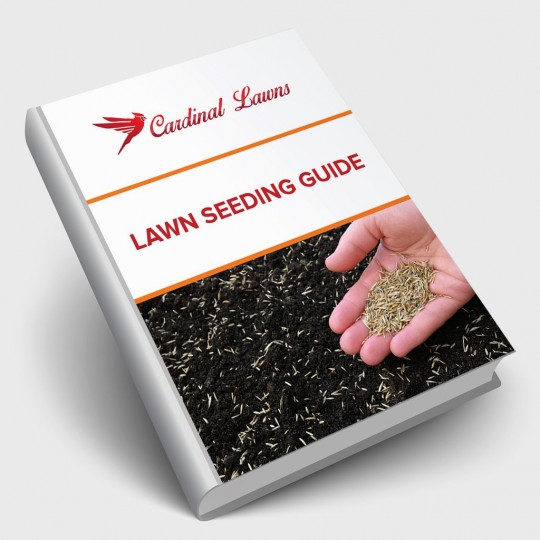Use These Four Aeration Tools to Make Your Lawn Gorgeous
Posted
September 8, 2016

It’s important to aerate – essentially, poke holes in – your lawn at least once a year. Aeration loosens up the soil, improves drainage and air flow around the plants, and it promotes root depth and root growth. We bet you’ll see thicker grass growth and healthier color in your lawn just a week or two after you aerate. But how to do it? What aeration tools produce real results? Here are the four items you should consider (and one you can skip) to revitalize your lawn.
Must-Have Aeration Tool 1: The Garden Fork
The solid-pronged garden fork (not to be confused with the salad fork) is a necessary tool to help improve air flow and rain percolation throughout your landscape. To use it, go over your lawn carefully with the fork. Push the tines down about four inches and wiggle the fork a bit to widen the holes. Continue this process every four inches or so, stabbing and wiggling your way across the lawn.
Must-Have Aeration Tool 2: Hollow Tiner
This special tool is used just like the garden fork and has the same spacing. But like the name says, it has hollow tines, meaning that plugs of soil are removed. It’s designed to reduce soil compaction. Use it as you would a garden fork. Fill in the spaces made with high quality topsoil.
Aeration Tool 3: Scarifier
Let your lawn breathe with the scarifier, which is not really as “scary” like its name appears. The scarifier (also called a dethatcher) does the job of a rake, but with substantially less effort. It has steel blades that remove leaves, moss and thatch from the base of grass blades. This allows air to circulate and helps water and fertilizer get down into your root zone. Begin with the scarifier on a high setting. Go over the surface a couple of times. Then repeat the process at slightly different angles, reducing the height of the setting with each pass.
Aeration Tool 4: Seed Slitter
If your lawn looks thin or spotty, consider buying or renting a slit seeder, also called a slice seeder or overseeder. This electric tool uses knife blades to cut into the soil and another to drop seeds into the newly-formed slits in the ground. We recommend going over the lawn twice with the tool, the second time going in rows perpendicular to the first line of rows. Water your lawn thoroughly after seeding.
Save Your Money: Spiked Shoes
Aerating spikes, the kind that you can strap onto your boots or shoes, are a method that we do not recommend for effective aeration. The spikes on the soles are usually no longer than two inches, far too short to aerate your lawn. In thin spots on your lawn, the spikes will sink in and pull up dirt, damaging your lawn. The spikes can be awkward to walk in, too. If you’ve got any small rocks in your soil, get ready to stumble or fall over. We recommend skipping this gardening fashion faux pas and saving your money!
For More Advice on Aeration Tools, Seeding and More, Call on Cardinal Lawns
If you aren’t sure about how to aerate or seed your lawn effectively, or the work is something you can’t or don’t want to tackle on your own, contact the experts at Cardinal Lawns. We can come up with a tailored approach that will help your lawn breathe and look its most gorgeous. Call us at 614-808-4446 for a free consultation.
Special Offer for New Customers
Two Free Lawn Care Treatments
Hurry! Offer Expires April 30, 2025

Download Your FREE Lawn Seeding Guide
Lawn seeding can give your grass a much-needed makeover. Take some time to learn about various seeding processes. This handy guide teaches you how to determine which type of seeding is best for your lawn.